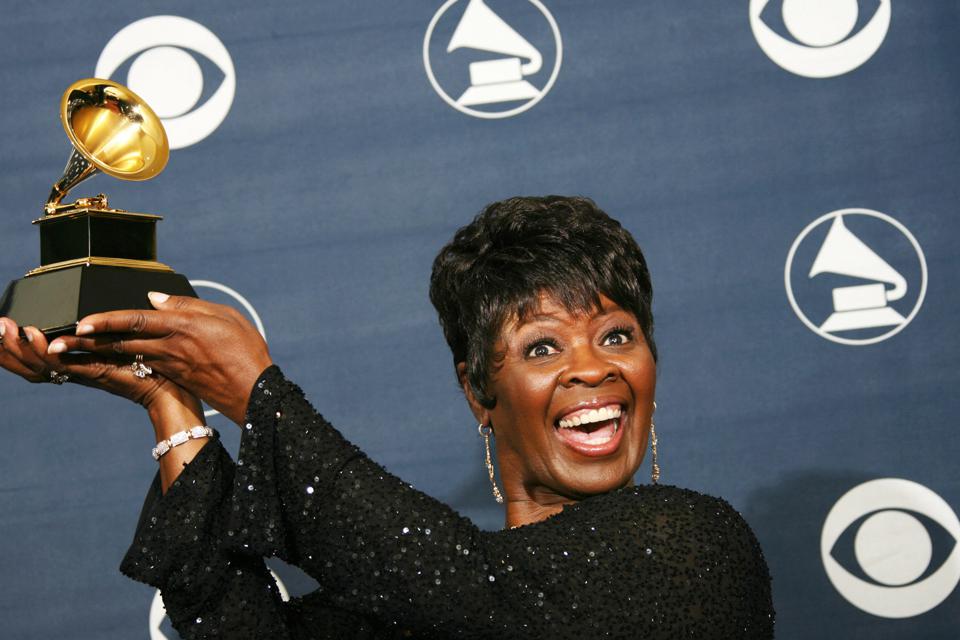
Los Angeles, UNITED STATES: Winner of Best Contemporary Blues Album Irma Thomas poses with the … [+] trophy at the 49th Grammy Awards in Los Angeles 11 February 2007. AFP PHOTO/Gabriel BOUYS (Photo credit should read GABRIEL BOUYS/AFP via Getty Images)
AFP via Getty Images
The arts have taken on renewed importance amidst COVID-19 as Americans turn to music, movies, books, comedy, TV and more for entertainment amidst isolation during quarantine.
As the old saying goes, life often seems to imitate art. But in the last several months, myriad musical works have taken on new meaning when viewed through the prism of pandemic.
In 2006, New Orleans R&B/soul/gospel singer Irma Thomas released her 18th studio album After the Rain.
The album was recorded in 2005 just months after Hurricane Katrina wrought devastation upon New Orleans. While the songs that make up the album were chosen by Thomas and producer Scott Billington well before the arrival of Katrina, they nevertheless managed to address the times upon release just eight months after the storm.
Recommended For You
Just as artists attempted to find their way back to New Orleans following the hurricane, today artists find themselves wrestling with the idea of coming back again, forced to figure out new ways to make a living as the coronavirus pandemic takes live performance off the table indefinitely.
Themes like survival and maintaining hope after loss emerge from the 13 songs that make up After the Rain, eerily applicable to life not just after the hurricane but again today during turbulent times.
So, it’s strangely appropriate that one of Thomas’ most lauded albums – one for which she received her first Grammy award – is now available on vinyl via Craft Recordings 14 years after its initial release.
“I’m so happy to hear that After the Rain is being issued on vinyl. Because, right now, this is a time where people need something to listen to and hear and play,” said Thomas, 79, over the phone. “And who would’ve thought vinyl would be a thing again? I’m glad that it came back. Because I have about 200 albums that I managed to salvage during Katrina. At one point, I thought it was a dead source of music. But, no – it’s coming back.”
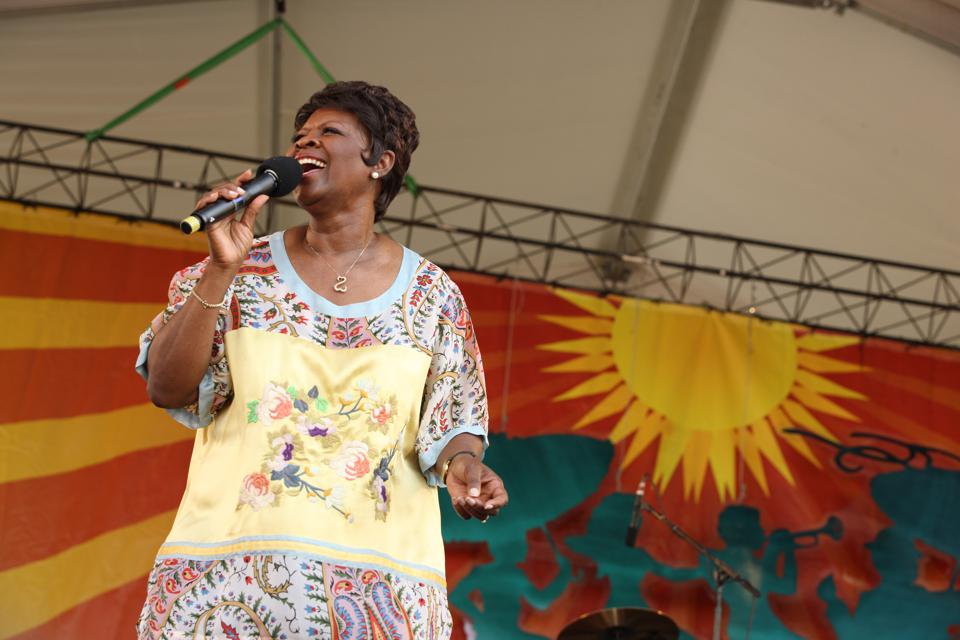
NEW ORLEANS – APRIL 25: Irma Thomas performs during the 2009 New Orleans Jazz & Heritage Festival at … [+] the Fair Grounds Race Course on April 25, 2009 in New Orleans. (Photo by Barry Brecheisen/WireImage)
WireImage
After the Rain is an album bookended by songs about storms. Thomas and Billington also tweaked the lyrics to the traditional blues song “Another Man Done Gone” to reflect the challenges being confronted at the time by Katrina evacuees who lost their homes entirely or returned to find them destroyed by flooding.
A cover of Stevie Wonder’s “Shelter in the Rain” closes the album on a hopeful note despite uncertain times.
“That’s what we as entertainers sing for: to give people hope. To give them something to be able to sing and get through what it is they’re going through. And, right now, we all are going through something. And so whatever songs on the album fits whatever mood a person may be in – if it brings them out of that funk that they might be in – then that’s what it’s all about,” said Thomas looking back at the album. “And that song was not one of the original songs that was decided upon,” she said, noting the album closing Stevie Wonder cover. “It came about after the album was completed in Lafayette. That was the one song that was recorded here in New Orleans with [pianist] David Torkanoswky and myself in the studio. It happened to have been the last song that we chose. And, as it turned out, that was the perfect song for the entire album. It wound up being the title song. It’s very unreal.”
Recording shortly after Katrina meant recording in Lafayette, Louisiana at Dockside Studios instead of in New Orleans itself. With the idea of live music then put on hold, the 2005 sessions provided a welcome respite for Thomas and her band.
“Well, it was a form of therapy,” said Thomas of recording After the Rain. “As far as I was concerned, it was good to be able to be in the studio. When I thought about the fact that my only job I had for the month of August would take me out of the city, it was very [cathartic] for me to go in there and be able to let loose. I’m still here. It was just a way to let go of my feelings. So it was very important to me to be able to go in there and get that done.”
After the Rain found Billington and Thomas in search of a new approach. Ultimately, producing his seventh Thomas album, Billington decided on sparse arrangements which skewed largely acoustic, lending the songs an intimate warmth. The vocals of Thomas take center stage on every cut, guiding fans through a series of songs that each tell a story.
Initially unsure of the new process, Thomas ultimately trusted her producer.
“We’ve grown to be like family. We understood each other. He understood what I could do. I understood what he was trying to do,” she said of her relationship with Billington. “When I’m in the studio, when I’m recording, I put myself as if I’m singing to a live audience. I’m trying to speak to the people that I’m singing to. Because when you’re on that stage, you have to sell your business as we used to say back in the day. We’re selling the idea and the thought and the feeling of what we’re doing,” said Thomas of her approach to the songs and Billington’s prioritization of vocals and honesty. “So I always put myself on stage when I’m in the studio. And that’s what makes it easier for me to come across and be believable. Because I do believe what I’m saying.”
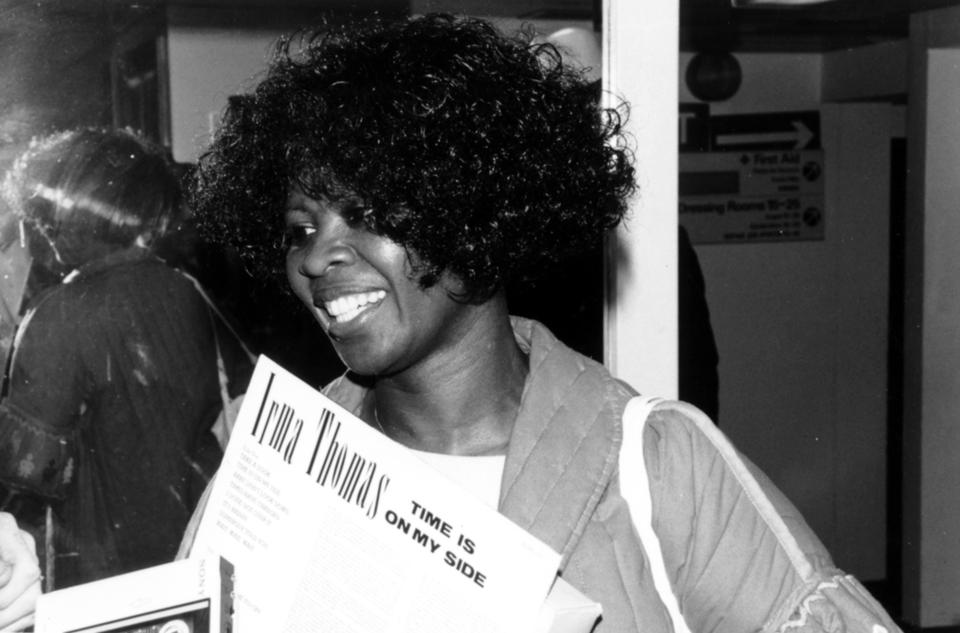
UNSPECIFIED – JULY 24: Photo of Irma Thomas (Photo by Charles Paul Harris/Michael Ochs … [+] Archives/Getty Images)
Getty Images
Strong narrative mattered on cuts like “Don’t Mess With My Man,” her first single in 1959, and “Wish Someone Would Care.” It also came to define “Time is on My Side,” a track written by Jerry Ragovoy and released by Thomas in 1963, acting as a clear influence on the Rolling Stones who’d go on to cut a nearly identical version of her song one year later.
Growing up surrounded by songs with a story made a profound impact on the future entertainer.
“My dad was a big blues fan. He had all the early B.B. King, Lightnin’ Hopkins, Percy Mayfield. He had some early Ruth Brown and Etta James – when Etta James was only like 14 or 15 years old and she was recording stuff. Plus, locally in New Orleans, we had radio stations that did a lot of rhythm and blues. They had a lot of jazz. We also had a lot of gospel music. And we even had – they didn’t call it country music then, they called it hillbilly music. Ironically, hillbilly music made sense. Because most of them were telling stories about their own lives. So I had a lot of influences,” Thomas said, noting formative moments.
“Being an only child growing up, the TV used to be my other company keeper. At night, when they had the shows like the Ed Sullivan Show, I used to see Pearl Bailey on there. And I liked the way that she came across with her audience. She looked like she was so comfortable in what she was doing. And it wasn’t like she was doing a performance – it was like she had company invited into her living room,” said the singer and entertainer. “At the time, when I was watching all of this, I had no ambitions about being a singer. Because I didn’t know you could make a living doing it. But when I became an entertainer, then I went back to those times and that’s where I got a lot of my inspiration from.”
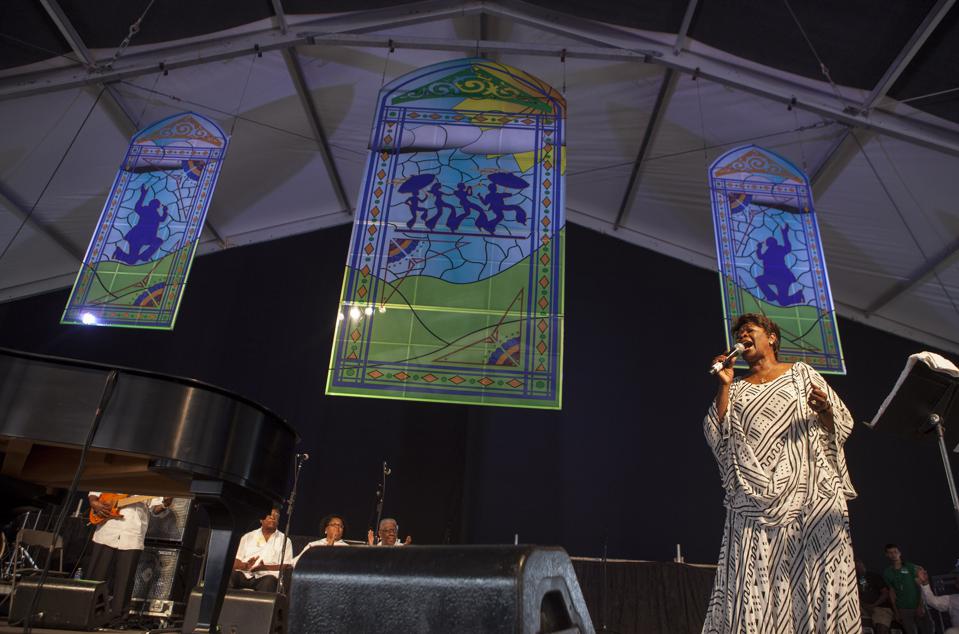
NEW ORLEANS, LA – MAY 02: Irma Thomas performs during the 2014 New Orleans Jazz & Heritage Festival … [+] at Fair Grounds Race Course on May 2, 2014 in New Orleans, Louisiana. (Photo by Barry Brecheisen/WireImage)
WireImage
Coming of age in the church also had a profound impact down the line. From her earliest days performing in the church, where she still sings each week in the choir, Thomas embraced the art of storytelling she learned from readings and non secular songs characterized by catchy choruses.
“I was brought up in the church and I am an avid church person. When I’m not on the road, I go to church every Sunday. I am a participant in the choir – although now we can’t have a full choir so I’ve been a choir of one for a few weeks,” said Thomas, noting the churchgoing experience during pandemic. “But I enjoy and I get great inspiration from it. I get a good feeling when I’m doing gospel music. Because gospel music is the way of prayer,” the singer said. “I have strong faith in my gospel music. And I don’t mix the two. Because I don’t want people to misunderstand what I’m singing about. When I’m doing my rhythm and blues and singing ‘Hip Shakin’ Mama’ while you’ve got a glass of liquid in your hand, I don’t wanna be singing about god – because I don’t want you to confuse who I’m worshiping at the time! Some entertainers end all of their shows with a gospel hymn – I don’t. I don’t even sing ‘When the Saints go Marching In’ at the end of the show. Because it’s a gospel song.”
One of the most culturally unique and musically diverse festivals in the country is the New Orleans Jazz and Heritage festival, one which puts an emphasis on New Orleans’ storied history of gospel music.
Thomas has performed at the festival annually since 1974. Even following Hurricane Katrina, the show went on. But this year, it was postponed due to the onset of coronavirus in America.
Perhaps more than any other city in the U.S., New Orleans is synonymous with the idea of live music, an art form whose absence makes for strange times in the Crescent City.
“WWOZ decided to have a jazz in place type of thing. They went back and pulled up some of the old archives and had kind of a Jazz Fest by way of radio – which kind of helped a lot of us get through those times without being in a blue funk way. And that was very uplifting,” said Thomas, noting the efforts of one of the most unique independent radio stations in the country. “It is a bit weird. Surprisingly so, the social distancing thing is kind of difficult at best for a lot of us. Because this is how New Orleans is! We’re people who are inviting. We’re hospitable. We open our doors and arms and our kitchens to strangers. So to have to have this social distancing thing going on, we have to really, really think before we make moves,” explained the singer of efforts meant to curb the spread of COVID-19. “It’s just not a normal thing for us to not be able to embrace each other in a greeting or embrace a stranger and make them feel at home in our city. So it’s a bit much right now!”
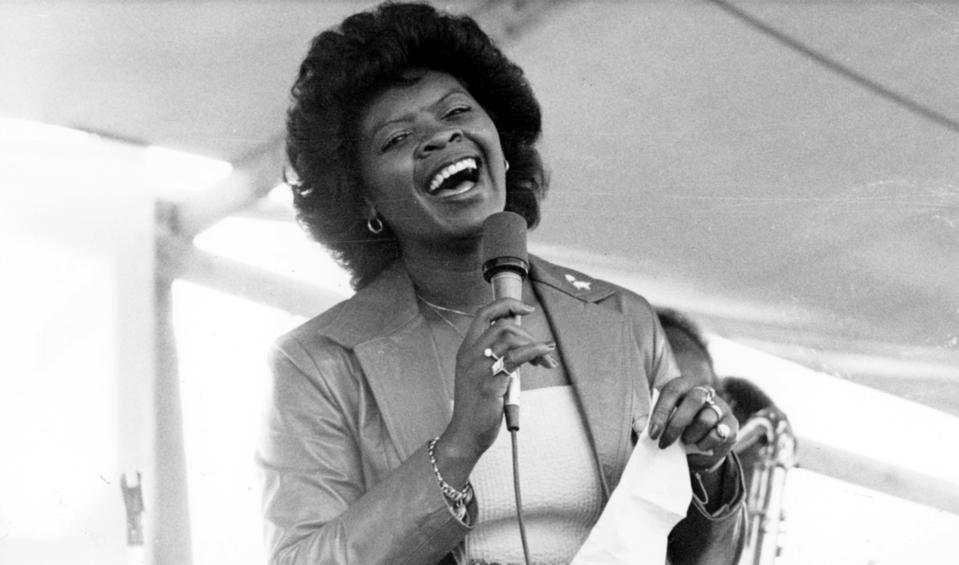
UNITED STATES – APRIL 28: Photo of Irma Thomas at the New Orleans Jazzfest on 4-28-79 (Photo by … [+] Charles Paul Harris/Michael Ochs Archives/Getty Images)
Getty Images
Following Katrina, Thomas lost her home. She also closed up her longtime venue The Lion’s Den following the storm, one where she’d cook for music lovers as well as perform.
That history as owner and operator of a small independent venue leaves Thomas acutely aware of just how difficult it is for artists and venues alike amidst an absence of live music. During an era where it’s become more difficult than ever to otherwise monetize recorded music, live performance has become the single biggest revenue stream for most artists.
And cities like New Orleans, which are highly dependent upon tourist dollars driven by live performance, are also heavily impacted.
“I haven’t had a club since Katrina. But I understand the business aspects of it. And it’s difficult to have a tour when a promoter can’t make its money,” she said. “You’ve got to realize some of these venues, and some of these shows that are put on, you’re looking at millions of dollars worth of expenses. And that’s including the expense of paying the artist. So you can’t really have a program at a venue because you can’t make your money back. So that’s out of the question.”
While Thomas’s After the Rain album was released in 2006 following Hurricane Katrina, it’s fascinating to observe the ways in which the album continues to remain relevant, speaking to today’s times.
Celebrating its vinyl debut, Thomas continues to hone in on After the Rain’s most enduring trait – hope.
“The songs on that particular album at the time it was released just happened to fit in with what had happened after the storm came along. It gave us an opportunity to get through what we had been through,” said Thomas. “That’s the advantage of trying to find songs that make sense – they are timeless. When you get a song that has great lyrics and great meaning, it has no set time. It’s timeless. And here we are, what, 14 years later almost? And it’s still apropos for the times we’re going through,” she said. “You’re talking to a very optimistic person. And there’s always hope. If you give up that one little thing called hope, and the other little thing called faith, you’re lost. And I refuse to see the glass as being half empty. I’m going to see it as half full.”